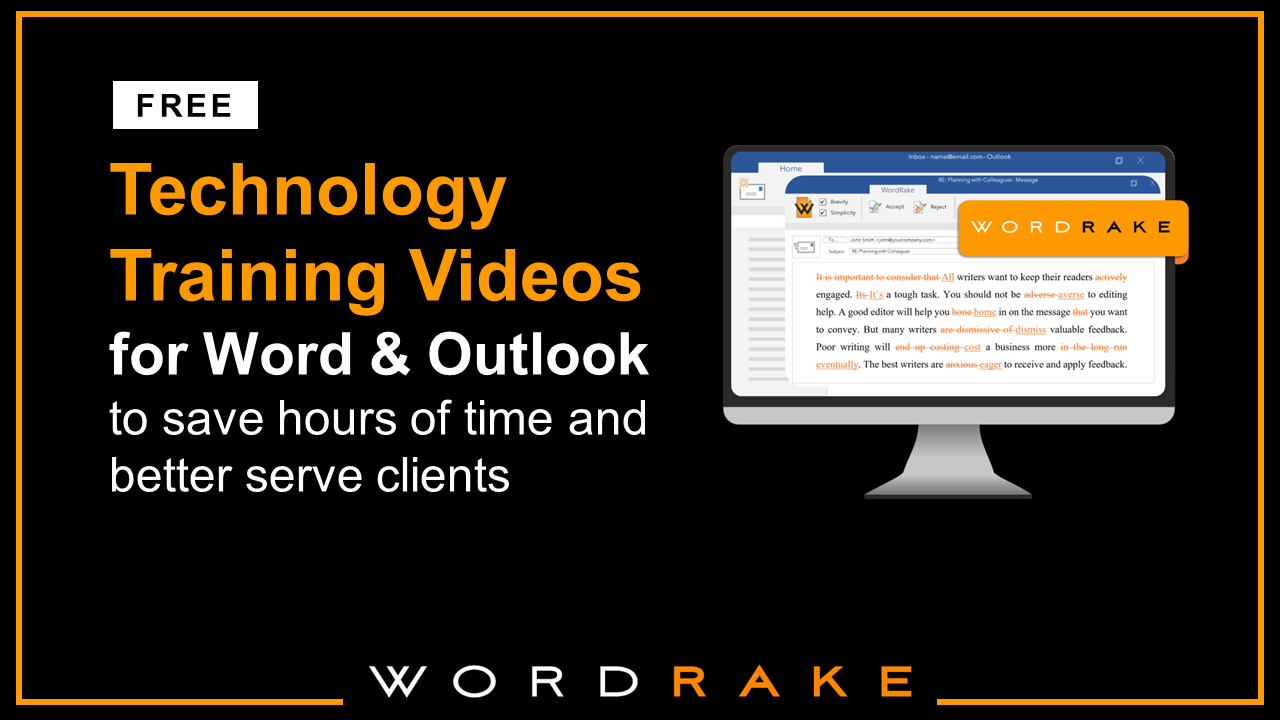Effective legal writing involves connecting compelling arguments with cited support from relevant legal authorities. A clear understanding of these authorities’ hierarchy amplifies the persuasive strength of your assertions. Mastering tools like the Table of Authorities (TOA) in Microsoft Word can improve your productivity. Combining legal writing skills with technological assistance elevates the quality of your work, ensures adherence to court timelines, and helps you concentrate on your argumentation.
The TOA does more than list the citations in a legal brief: it improves your arguments’ credibility. It helps legal writers check they’re using a well-rounded mix of sources without over-dependence on certain types—particularly non-binding secondary sources. Remember, citations are not mere formalities; they are fundamental elements that infuse credibility into your legal writing, bolstering its persuasive power. Thus, effective legal writing combines articulate argumentation, authoritative citation, and proficient use of tools like the TOA.
Crafting a Compelling Legal Brief: Authority Selection and Application
Legal writing requires precision: not just well-crafted sentences but also accurate and credible citation of authorities. Creating a persuasive legal argument is a complex process that involves a deep understanding of legal authorities, strategic source selection, and effective citation. These elements collaboratively sculpt a compelling argument.
Understanding Legal Authorities and Their Weights
In our legal system, courts refer to previous decisions or precedents for guidance. Precedents provide consistency and confidence in the law. There are two types: binding and persuasive. Binding precedents fall under the doctrine of stare decisis, requiring courts to follow their own decisions and those of higher courts in the same jurisdiction. Persuasive precedents require courts to consider previous decisions for guidance. Understanding these ideas helps in effective citation.
Legal authorities fall into three categories: binding primary, persuasive primary, and secondary. Each carries a different weight, directly influencing their impact on legal arguments and the citation order in a legal document.
- Binding Primary Sources: Constitutions, statutes, regulations, and court rulings carry the most weight. These primary authorities provide binding precedents—decisions or interpretations created by higher courts within the same jurisdiction.
- Persuasive Primary Sources: Persuasive authorities are primary sources from other jurisdictions or lower courts. These sources are not binding but can strengthen an argument by offering more perspectives.
- Secondary Sources: While carrying the least weight, these sources offer valuable analysis of primary sources, adding depth to legal arguments. Secondary authorities include sources like legal treatises and law review articles. They often bring clarity and insight that enrich legal narratives.
In the larger picture, understanding the weight of different authorities helps legal writers structure their arguments strategically to provide solid support for their claims and highlight the relative strength of different sources. The weight of authority is influenced by factors like factual relevance, recentness, and judicial trends, and determines the citation order in a citation sentence.
Strategically Selecting and Citing Authorities
Developing a persuasive legal brief requires a sound citation plan, dictated by the Bluebook’s guidelines and enhanced by thoughtful, stylish citation strategy. Think of your citation plan as an extension of your argument, putting the most importance on relevance and weight of authority: binding precedents first, persuasive precedents second, and secondary authorities last. The right citations can help you convince a court to follow, distinguish, or overrule precedent.
For uniformity and clarity, legal writers follow the Bluebook. Rule 1.4 of the Bluebook stipulates that authorities should be arranged based on their weight and relevance to the issue. Following the Bluebook rules ensures each source is properly documented and incorporated as support for your propositions. While the Bluebook determines the order of authorities for citation, it does not drive the order of authorities in the Table of Authorities.
Treat selecting and incorporating citations as an integral part of the writing, editing, and revising process—don’t relegate citations to the status of mere technicalities. Citations communicate important details about the weight and validity of authority, such as the issuing court or the year of the decision. You need not repeat that data in the prose because citations can efficiently convey it. During revision, carefully assess citation placement, ensuring every legal assertion requiring support is adequately cited. By treating citations as an important part of your writing, you can improve clarity, credibility, and persuasiveness.
Ensuring Persuasion through Credibility and Sound Reasoning
Credibility is an important part of effective legal writing. To improve your credibility, make sure the authority you use to support your arguments is sound, properly interpreted, and perfectly presented according to Bluebook rules. A judge must feel comfortable with your line of reasoning to adopt it. Even if your legal brief is well-written, it may fail if the judge feels your position would require taking legal risks. So, when making creative legal arguments, clearly explain why it’s likely that an appellate court would adopt your reasoning and conclusions.
Building a Table of Authorities for Legal Documents
The TOA, a critical tool in legal writing, provides an organized list of legal citations in a document. It aids readers—including judges and opposing counsel—in efficiently locating and reviewing the authorities cited in your arguments. However, the TOA isn’t designed to reflect the weight of authority. It primarily serves as an alphabetical index of all legal citations in your brief, offering a clear layout and easing navigation and review of references.
Creating a Table of Authorities in Microsoft Word
To create a TOA in Microsoft Word, follow these steps:
- Identify legal citations in your document for your TOA.
- Determine where your TOA should be placed within the document.
- Position your cursor at the desired location.
- Navigate to the “References” tab on your Word menu and select the “Table of Authorities” option.
- Follow the prompts provided by Word to create your TOA, selecting your citation format, adjusting settings, and adding citations.
For a video tutorial explaining how to mark citations and create a Table of Authorities, check out our technology training video. For a written guide with screenshots, see Legal Office Guru.
NOTE: TOA requirements may vary by jurisdiction, so it’s important to understand and comply with these rules. For example, some jurisdictions like Illinois, Oklahoma, Kentucky, and Kansas require a Table of Points and Authorities: a combined TOA and table of contents.
Improving the TOA Process with Word Add-Ins
Despite Word’s helpful tools, creating a TOA can be complex and time-consuming. Additional software applications and add-ins, such as Lexis for Microsoft Office, Best Authority by Litera, and Drafting Assistant by Thomson Reuters, can simplify the process. They provide features such as automatically finding and marking citations in the document, checking citation conformity with jurisdictional rules, and alerting for overruled or questioned cases. Clearbrief can create a Table of Authorities, hyperlink all citations to cases, the law, and the record, and provide this interactive version for judges, clerks, and all parties in the case. For citation formatting, tools like PerfectIt with American Legal Style can provide quick corrections to conform with Bluebook requirements.
Using the TOA to Guide Strategic Thinking and Enhance Arguments
Your TOA serves as more than a reference list—it’s a strategic tool for assessing and improving your legal writing and citation practices, which makes it a valuable part of your legal writing strategy.
Noticing Over-Citation
Be careful to avoid unnecessary repetition or excessive citations; you need only use enough citations to make your point. Over-citation can clutter your prose and diminish the impact of your strongest authorities. During revision, carefully assess citation placement, ensuring every legal assertion requiring support is adequately cited but that none are overdone.
Noticing Over-Use of String Cites
String cites are lists of citations that all support the same point. While they can show how different courts interpret a law, using too many can make your argument confusing. The TOA can reveal if you’re relying too much on these, pushing you to reconsider your choices and achieve balance.
Remember that string cites should not replace your legal analysis. You still need to make sure that the legal authorities you use are sound and correctly represented. While you can use them to present unique legal arguments, make sure to explain why a higher court would likely agree with your reasoning. This builds trust with the judge, showing them that your client’s position won’t lead to a reversed decision.
Noticing Over-Reliance on Secondary Sources
You can also cite persuasive authorities and secondary sources in your legal documents, but knowing when to do so is crucial. If no mandatory authority exists in your jurisdiction, persuasive authority from a higher court or a court at the same level could be your best choice. Be mindful, though, that some jurisdictions may carry more weight than others. If your TOA is mostly citing secondary sources, you might need to revisit your research and argument. Strengthening your argument with more binding authority can give the judge the confidence they need to make a favorable decision.
Improving Clarity and Persuasion with WordRake
Perfecting a legal brief goes beyond drafting—it involves a comprehensive editing process designed to improve clarity, brevity, and persuasiveness. A well-edited document ensures a smoother reading experience, whether for a judge, a law clerk, or opposing counsel. WordRake can help streamline editing by pinpointing and correcting redundant words and awkward phrasing. WordRake scrutinizes your text to identify and rectify weak, unclear, and wordy writing. It is advanced editing software that uses proprietary algorithms to improve your writing quality. Through rigorous editing, WordRake helps lawyers present their arguments in the clearest possible manner, reducing ambiguity and complexity. Integrating WordRake into the editing process allows you to produce compelling, concise, and persuasive arguments, harnessing the power of technology to improve legal writing.
Conclusion
Mastering legal writing requires a balanced approach that combines clarity, persuasiveness, and a comprehensive understanding of legal authorities and technology. Integrating tools like Microsoft Word’s TOA into the writing process not only helps legal professionals meet court deadlines but also improves the overall quality of legal writing. Editing tools like WordRake simplify the editing process, saving valuable time so you can focus on crafting and effectively communicating persuasive arguments. These techniques and tools lead to improved advocacy, professionalism, and ultimately, career success.
About the Author
Ivy B. Grey is the Chief Strategy & Growth Officer for WordRake. Prior to joining the team, she practiced bankruptcy law for ten years. In 2020, Ivy was recognized as an Influential Woman in Legal Tech by ILTA. She has also been recognized as a Fastcase 50 Honoree and included in the Women of Legal Tech list by the ABA Legal Technology Resource Center. Follow Ivy on Twitter @IvyBGrey or connect with her on LinkedIn.








